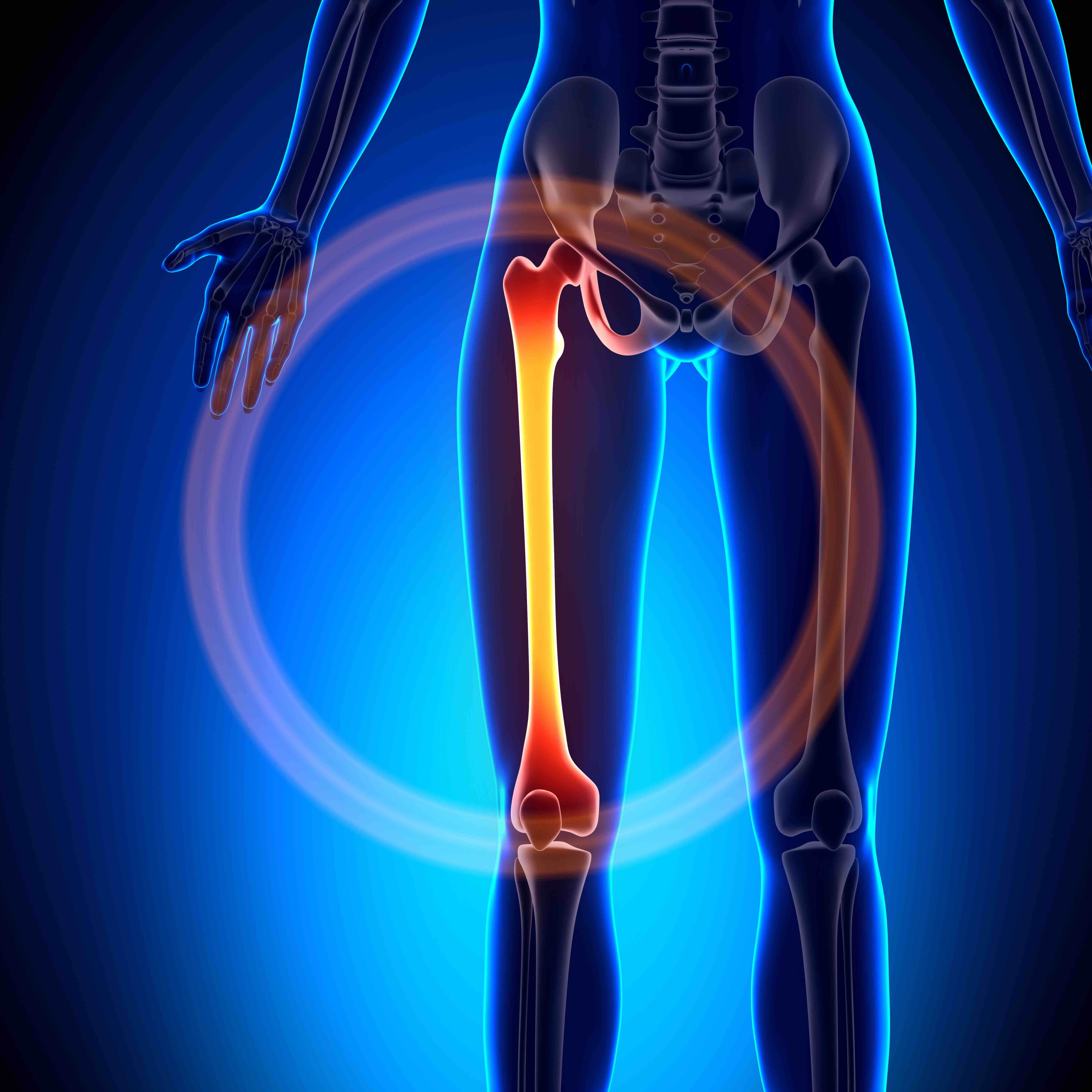Femoral Fractures

What causes a Femoral Fracture?
The femur, or thighbone, is the strongest bone in the human body. Because of this strength, it takes a large amount of force to break it. A femoral fracture is typically caused by trauma such as a motor vehicle accident.
The long part of the femur that people consider their thigh is called the femoral shaft. A break or fracture along this length of bone is called a femoral shaft fracture. A fracture at or near the femoral head or neck is typically referred to as a hip fracture. A femoral fracture almost always requires surgery to heal.
What are the types of Femoral Fractures?
Depending on the force that causes the break in the femur, femoral fractures vary. In an open fracture, the bone punctures or protrudes out of the skin. In a stable fracture, the pieces of the bone still line up correctly unlike a displace fracture where the broken pieces are out of alignment.
Femoral fractures are classified based on:
- The location of the fracture
- The pattern of the fracture
- Whether or not the skin and muscle surrounding the bone is torn by the injury
The most common types of femoral fractures are transverse, oblique, spiral, comminuted, and open fractures.
- In a transverse fracture, the break is a straight horizontal line going across the femoral shaft.
- In an oblique fracture, the fracture has an angled line across the shaft.
- In a spiral fracture, the fracture encircles the shaft caused by a twisting forces to the thigh. Think of the stripes on a candy cane.
- In a comminuted fracture, the bone is broken into three or more pieces.
- In an open fracture the bone will stick through the skin. These are also referred to as compound fractures. These are the worst out of the types of femoral fractures due to the amount of potential complications that may arise. Open fractures often involve greater damage to surrounding muscles, tendons, and ligaments, along with a higher risk of infection.
- Femoral Fractures may occur from Hip Resurfacing
- Femoral fracture may occur simultaneously with a hip dislocation.
How do you treat a Femoral Fracture?
Femoral fractures almost always require surgery. Very young children can sometimes be treated using a cast but this is rare. A femoral fracture is typically deemed an orthopedic emergency and should be treated 24-48 hours after initial injury. If the patient has other life threatening emergencies, those may be tended to first.
The most popular method for fixing a femoral fracture is intramedullary nailing. A specially designed metal rod is inserted into the canal of the femur. The rod passes across the fracture to keep it into position. An intramedullary nail is then inserted into the canal either at the hip or the knee, held in place with screws to hold the leg in the correct alignment.
Another surgical technique is using plates and screws. With this method, the one fragments are reduced into normal alignment and held together with plates and screwed attached to the outer surface of the bone. This method is primarily used when intramedullary nailing is not an option.
Rarely a femoral fracture can occur in the ball portion of the femoral head. For a fracture like this to occur the hip would have to be dislocated. In the event of a fracture of this nature, the ball portion of the hip joint will have to be replaced entirely to regain function of the joint. This procedure is a partial hip replacement and is called a hemiarthroplasty.
The last potential surgical technique is external fixation. This is usually only a temporary treatment for patients who are not ready to have the long surgery to fix the fracture. In this operation, metal pins or screws are placed into the bone both above and below the fracture site. The pins and screws are then attached to a bar outside of the skin, acting as a stabilizing frame that holds the bones in the proper position.
How long does a femoral fracture take to recover?
A femoral fracture typically takes 3 to 6 months to completely heal. Some may take even longer depending on the type of surgery and degree of injury.
If you suspect you have a femoral fracture, please call your medical provider or your local emergency room as this is typically an orthopedic emergency!

F.A.Q.
What are Femoral Fractures?
Femoral fractures refer to the breaking or cracking of the femur bone, which is the thigh bone. These fractures can occur anywhere along the length of the femur, from the hip to the knee, and can vary in severity from minor cracks to complete breaks. Femoral fractures often require prompt medical attention and specialized orthopedic care to ensure proper healing.
What are the common causes of Femoral Fractures?
Femoral fractures can result from various causes, including trauma, falls, sports injuries, and vehicular accidents. High-energy impacts, such as those from a car crash or a significant fall, can lead to severe femoral fractures. In older adults, weakened bones due to conditions like osteoporosis can make them more susceptible to femoral fractures even from low-impact falls.
How are Femoral Fractures treated at AOA Arlington Orthopedics?
At AOA Arlington Orthopedics, our experienced orthopedic surgeons offer a comprehensive approach to the treatment of femoral fractures. Treatment options may include surgical interventions like open reduction and internal fixation (ORIF) or intramedullary nailing, as well as non-surgical approaches depending on the severity of the fracture. Our team will tailor the treatment plan to each patient’s unique needs, aiming to restore function and mobility while ensuring a successful recovery from femoral fractures.

